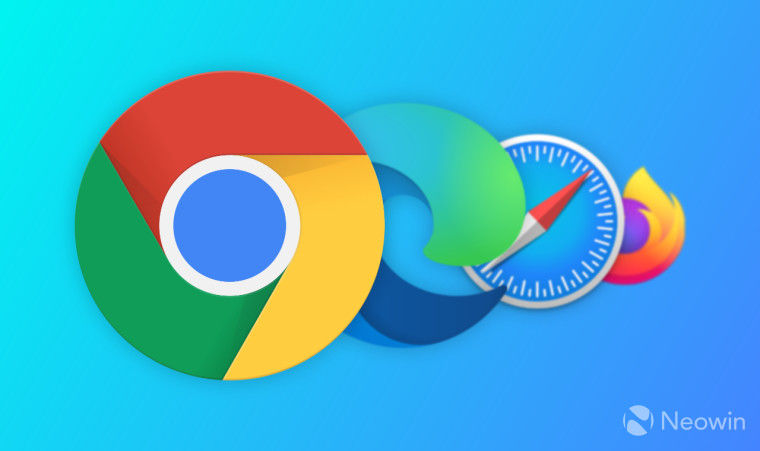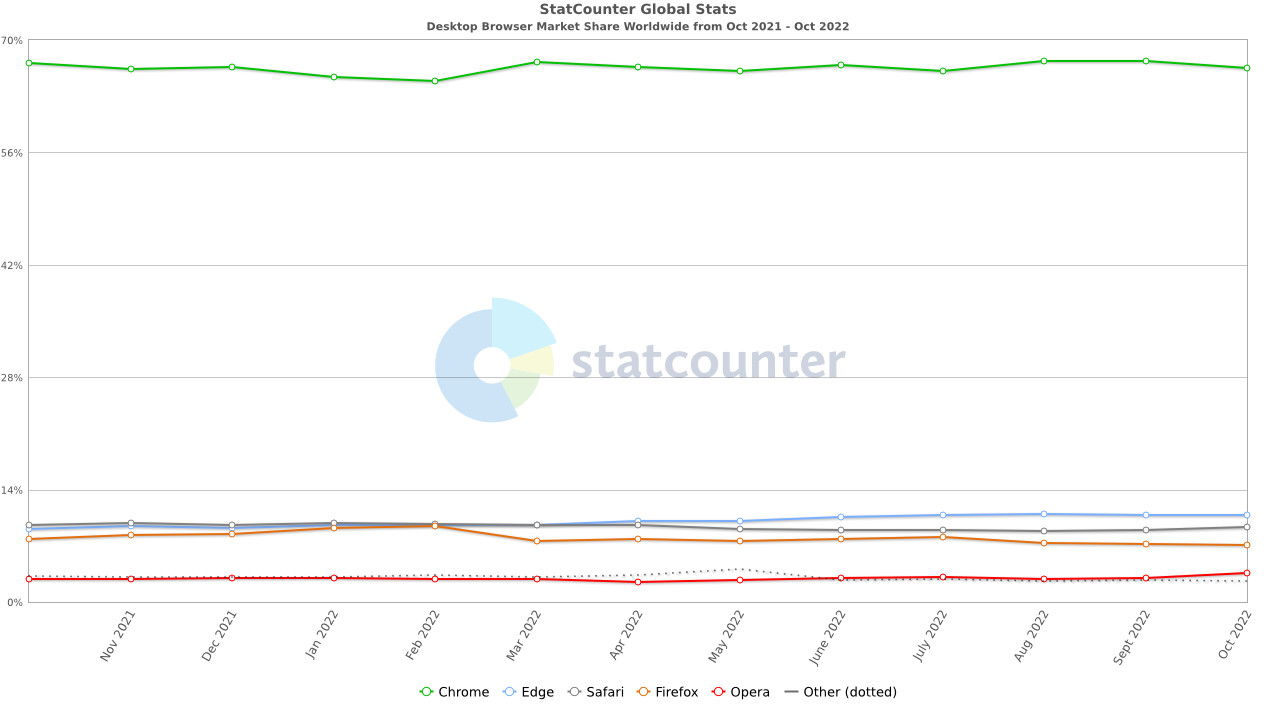
Here is the latest data from Statcounter, showing details about the desktop browser market and how the leading players are doing compared to one another.
The desktop browser market is a slowly moving ship, and monthly changes are often within a margin of error. The November 2022 report is no exception—it shows only tiny fluctuations in each player"s market share. Still, comparing several months and years lets you notice a general trend. For Microsoft Edge, that trend continues to be mostly positive. Slow but steady is how you can describe Edge"s growth in the desktop browser market.
According to Statcounter, after struggling for a while, Microsoft Edge has crossed the 11% mark for the first time since its introduction (including the OG "Spartan" Microsoft Edge from 2015). Modern Chromium-based Edge gained 0.31 points, reaching an 11.17% market share. For reference, one year ago, Microsoft Edge was at approximately 9.52% (+1.65 year-over-year increase).
Google Chrome is at the top, sitting firmly in first place with an unreachable 66.13% share (-0.36), making it impossible for any competition to come close.
Despite being available only on Macs, Apple"s desktop browser Safari is the third most popular choice, with a 9.62% market share (+0.26). Firefox is fourth (7.1%, +0.05), and Opera is fifth with 3.3% (-0.29).

As for Internet Explorer, the former king of the desktop browser market, about 0.77% of all users continue using this browser. Some people do not want or cannot let Internet Explorer go, despite Microsoft"s continuous efforts to substitute it with a much better Edge and its built-in Internet Explorer mode. You can spot a similar picture in the world of Windows, where some customers keep sticking to Windows XP, which died in 2014 (not an "eight-year-old OS," as some readers rightly noted). Expect the same to happen to Windows 7.
You can find more details about the latest report from Statcounter on the official website. As usual, remember that the data is approximate and not 100% accurate.